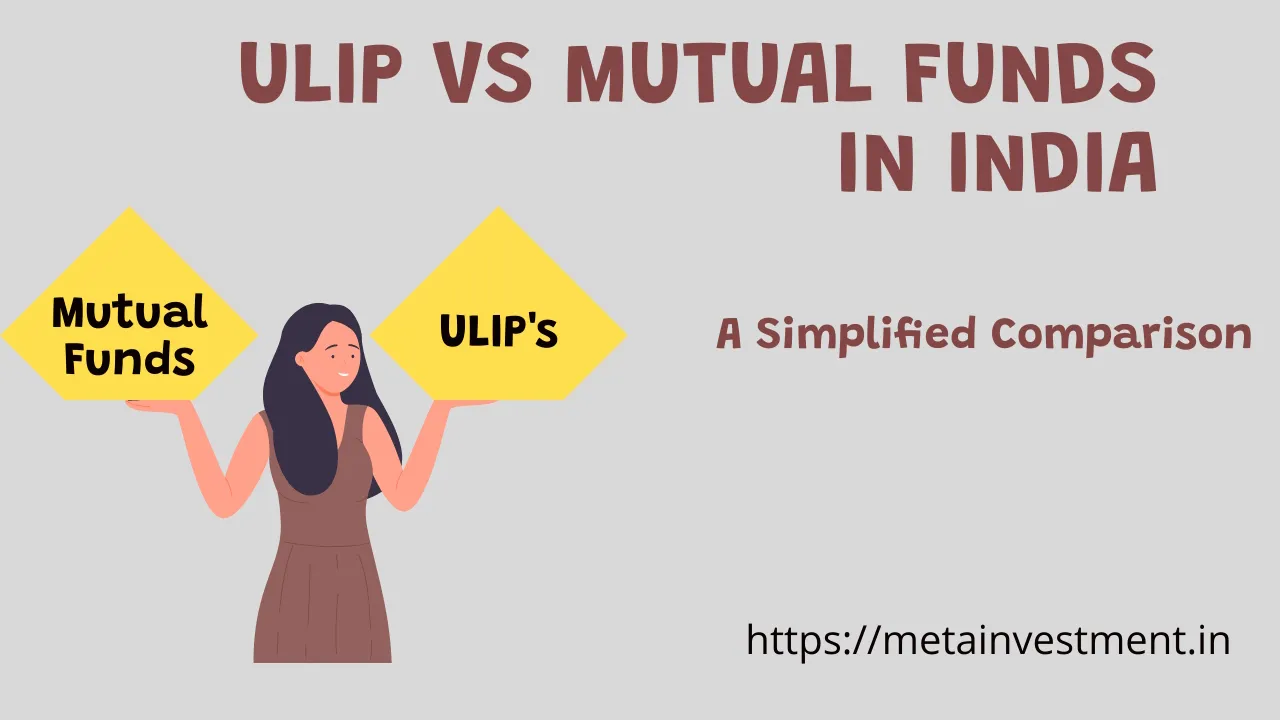Investing your hard-earned money is a wise decision, but choosing the right option can be puzzling. In India, Unit Linked Insurance Plans (ULIPs) and Mutual Funds are two popular choices for investment. Let’s break down the differences between these two options in a way that’s easy to understand.

Understanding ULIPs
What are ULIPs?
ULIPs are financial products that combine insurance and investment. When you invest in a ULIP, a portion of your money goes towards life insurance coverage, and the rest is invested in various funds, such as stocks and bonds.
Layman’s Terms:
Think of a ULIP like a combo meal - you get both investment opportunities and life insurance in one package.
Key Points:
- ULIPs offer the dual benefit of insurance coverage and investments.
- You have the freedom to choose where your investment goes - be it in stocks for growth or bonds for stability.
- ULIPs also provide tax benefits under Section 80C of the Income Tax Act.
Taxation of ULIPs
In addition to the tax deduction on the premium paid, the maturity proceeds of a ULIP are also tax-free, subject to certain conditions. If the annual premium paid is less than Rs. 2.5 lakh, the entire maturity proceeds are tax-free. However, if the annual premium paid is more than Rs. 2.5 lakh, then the long-term capital gains tax will be applicable on the maturity proceeds.
Things to keep in mind while investing in ULIP
Here are some of the things to keep in mind when choosing a ULIP plan:
- The type of funds offered by the plan
- The investment charges
- The lock-in period
- The surrender charges
- The customer service of the insurance company
Understanding Mutual Funds
What are Mutual Funds?
Mutual Funds are like a shared investment pot. Many people pool their money together, and a professional fund manager invests it in various stocks, bonds, or other assets on your behalf.
Layman’s Terms:
Think of a Mutual Fund as a group savings plan. You and many others put money together, and an expert takes care of investing it wisely.
Key Points:
- Mutual Funds come in various types, like equity funds (for potential high returns) and debt funds (for stability).
- They offer high liquidity, meaning you can buy or sell your shares at any time.
- Taxation in Mutual Funds depends on the type of fund and the time you hold it.
Taxation of Mutual Funds
Taxation of equity funds
-
STCG on equity funds: STCG on equity funds are taxed at a flat rate of 15%, irrespective of your income tax bracket.
-
LTCG on equity funds: LTCG on equity funds up to Rs. 1 lakh per financial year are tax-free. Any LTCG exceeding Rs. 1 lakh is taxed at a rate of 10%.
Taxation of debt funds
-
STCG on debt funds: STCG on debt funds are taxed as per your applicable income tax slab.
-
LTCG on debt funds: As per recent amendments in finance act, there is no indexation benefits available for debt fund. So LTCG on debt funds is also taxed as per your applicable income tax slab. For more information about debt fund taxation (see)[/2023/04/13/Taxation-of-Liquid-MF].
ULIP vs Mutual Funds: The Showdown
Now, let’s compare ULIPs and Mutual Funds side by side in a simple manner.
Returns on Investment
ULIPs can have higher costs due to insurance, which may impact returns. Mutual Funds usually have lower costs, potentially leading to better returns over time.
Flexibility
Mutual Funds offer more flexibility. You can switch between schemes anytime. ULIPs come with a five-year lock-in period, limiting your flexibility. Insurance Coverage ULIPs provide life insurance coverage; Mutual Funds don’t offer this benefit.
Tax Efficiency
Mutual Funds can be more tax-efficient, especially for long-term investments. ULIPs offer tax benefits, but they might not always be the most tax-friendly choice.
Costs and Charges
ULIPs have various charges like premium allocation charges and fund management charges. Mutual Funds typically have lower costs.
Conclusion
Choosing between ULIPs and Mutual Funds in India depends on your financial goals and preferences. If you want both insurance and investment in one go, ULIPs can be a good choice, but remember the lock-in period. Mutual Funds offer flexibility and potentially better returns but without insurance coverage.
In either case, it’s crucial to understand your financial goals and risk tolerance before making a decision. You can also seek guidance from financial advisors for personalized advice.
Remember, investing wisely today can lead to a brighter financial future tomorrow!













